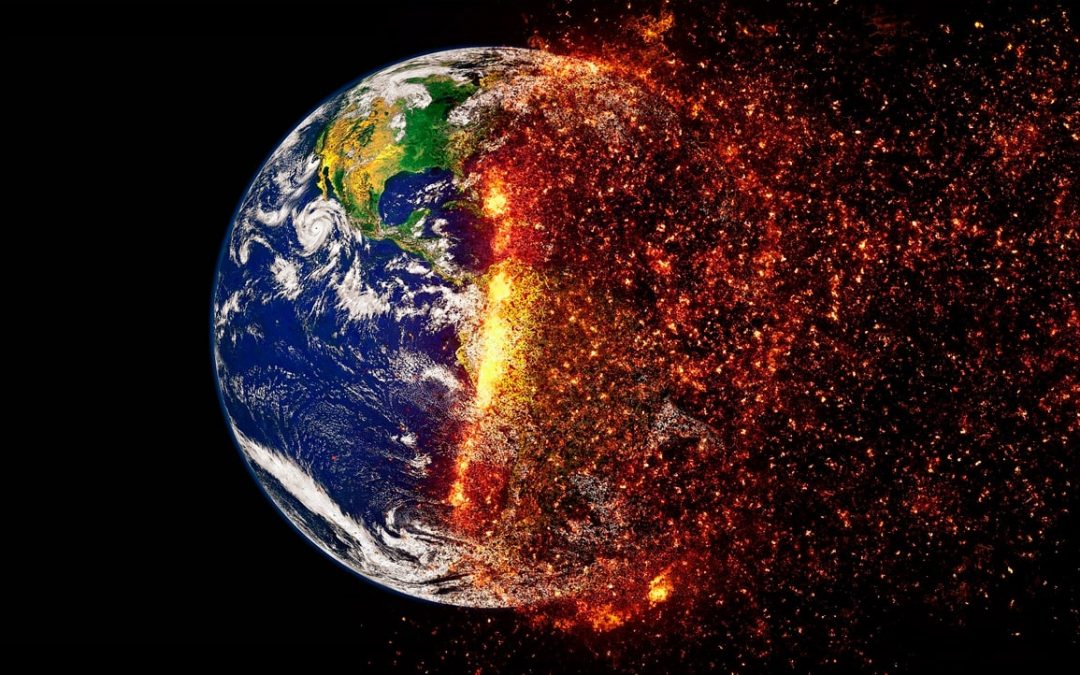
by Lea El Halabi | Apr 15, 2022 | Generic, Visualization
Does a Country’s Borrowing Policy Affect its Population’s Income level?
The Case of Lebanon

DOLLAR? LBP?
WHAT’S THE EXCHANGE RATE TODAY?
DISCOUNTING CHECKS? AT WHAT RATE?
WHAT???? 20%????
THIS MEANS I’M LOSING 80% OF MY MONEY!!!
I WAS DOING OK BUT NOW I CAN BARELY MAKE ENDS MEET…
This has unfortunately been the sad reality that
theLebanese people have been living for since
October of 2019.
WHY?
Because a Banking | Financial | Currency | Crisis
Made a Huge Bubble Burst!

BUT HOW DID WE GET HERE?

Lebanon has had a budget deficit for over 20 years
and has been borrowing from external parties
for as long as we can remember.
So, as Lebanese citizens, we are born indebted.
A country’s national debt affects its population’s income level:
-
Growing debt has a direct effect on economic opportunities
-
If high levels of debt crowd out private investments, workers would have less to jobs do and therefore earn lower wages

Countries with LOWER DEBT exhibit HIGHER INCOME levels per capita.
SO HOW HAS LEBANON’S DEBT BEEN CHANGING OVER TIME?

WHAT CAN WE DO TO MAKE THINGS BETTER?

Potential Solutions include but are not limited to:
-
Supporting Production and Services Sectors leading to more Job Creation and eventually More Wages
-
Improving Trade Agreements leads to more exports which would Reduce Budget Deficits and make the country economically healthier
-
Attracting Foreign Direct Investments by providing a healthy capital market (ex: improving Reporting Practices) which leads to More Investments & More economic opportunities, More Jobs and eventually More wages
IS THERE PROOF?
Countries with Open Trade Policies seem to have higher income levels

Countries with Updated Reporting Practices also have higher income levels

SO, WHAT ARE THE RECOMMENDATIONS?
STOP borrowing from international Agencies
CONTROL High National Debt Levels
Implement Policies to boost the economy


by zrm01 | Apr 15, 2022 | Uncategorized
Clean Energy and Climate Change
Switching to clean energy sources, like nuclear energy or hydraulic energy must happen as soon as possible. We all know what climate change is, and we’re all feeling it in the modern days. Having extremely cold winters, exactly like the one we just experienced in Lebanon, and very hot summers. Extreme weathers are happening all over the world, and more and more places are turning uninhabitable due to increase in sea and water levels as well as the increase in temperatures.
And the really bad news is that all of this is irreversible. And not decreasing the rate of greenhouse gas emission (the types of gases that cause climate change like carbon dioxide) will exponentially make global warming worse where no place on earth will be inhabitable.
Population is increasing at a very fast rate, forecasted to reach 8 billion by 2023. and more and more people need energy for their everyday lives. From driving cars, to using electricity at home. The current energy source used is mainly natural gas, which when combusted releases great amounts of CO2 in the air. And more land is required to be able to fit this many people.
CO2 emission from electricity production is increasing rapidly with time which is making climate change worse.
And this is mainly due to the power usage per capita. More and more energy is being required by every single person as the years pass. Combining this with the rapid population increase is a recipe for disaster in terms of greenhouse gas emission and climate change.
There are many energy sources that mankind uses in the present day, like hydraulic energy, wind energy, energy from oil and natural gases and many others. Some being renewable energy and clean energy and the others being harmful to the environment and contribute to global warming.
But when we divide them into two categories, one being clean energy sources and the other being energy sources that emit green house gases, we can clearly see the problem we are facing. Less than 20% of the total energy used around the world comes from clean energy sources. And the percentage of energy coming from clean energy sources doesn’t change with time. Meaning that we still use the same type of energy we used 50 years ago and no changes were made.
While everything is changing around us with technology, with self driving cars, phones that can do practically anything, why isn’t most of our energy coming from renewable sources.
The 17 goals set by the United Nations for sustainable development include affordable and clean energy, as well as climate action.
The question is, why aren’t we switching to clean energy sources and achieving 2 goals out of the 17 by one simple action.
Ziad Moghabghab
202224793
by nae51 | Apr 15, 2022 | Uncategorized

2022. Climate change. DROUGHT. Increasing DROUGHT periods. Shorter Time Between these DROUGHT periods. FAMINE.
Meet Zahi. Zahi is a 10 year old Somali boy who lives in Somalia. He has been suffering from acute malnourishment for a good while now.
In fact, as of 2022, it was reported that around 4.1 Million Somalis are just like Zahi: all acutely malnourished, or even severely malnourished. In other words, this means that 1/4th of the Somali population is at the very least acutely malnourished. What can that cause, you may ask? Illnesses, poor physical and cognitive development, and ultimately, death.
This makes Somalia the hungriest country in the world. If you are wondering how hunger is measured, it is by using a metric entitled the Global Hunger Index (GHI). The latter is calculated by gathering data about:
- Undernourishment: share of people in a given region/country whose caloric intake is deemed insufficient,
- Child Undernutrition: share of children under 5 who have low weight for their height (wasted children) and thus suffer from acute undernutrition, but also the share of children under 5 who have a low height for their age (stunted children)- which indicates chronic undernutrition,
- Child Mortality: mortality rate of children under 5 who die because of inadequate nutrition and unhealthy environments.
To visualize the world’s hunger, the map that can be viewed in Sheet 1 below or on this link has been created.
We notice that Somalia is indeed the only country in the world with an extremely alarming Global Hunger Index, with an average GHI of 58 over the past 20 years.
What makes the situation in Somalia this dire and helpless? Well, to say the least, poverty coupled with and aggravated by governmental corruption, several outbreaks (to list a few: cholera, malaria, measles, corona), inflating prices (notably with the current Russia-Ukraine crisis) and most importantly the series of drought periods that have been happening consecutively over the past years, with the 2011-2012, 2016-2017 and 2021-2022 crises counting as the 3 major and most recent drought crises that have happened (and are still happening). Moreover, drought means death of livestock, no water, parents abstaining from eating to feed their children the very little food they have access to, and overall hunger. One must note that droughts have always happened in Somalia (and in the Horn of Africa generally), meaning that the Somalis are used to drought, and they had adapted to it, knowing how to pick themselves up and continue. However, with climate change, these drought periods have become more acute and consecutive, with shorter periods separating them, hence disabling Somalis from the chance to recover from the last drought.
Alright, now what is the solution?
The deployment of an immediate humanitarian response: gathering funds through non-governmental organizations or even governmental donations which aim (but are not limited to) to sending emergency water supplies, sending food donations, treating the malnourished, distributing dietary supplements, opening and running health supplies but also giving out cash and livelihood support to those who are most in need.
Does this help?
Yes. It does.
As a matter of fact, just like the graph on Sheet 2 below shows (or the one you can see on this link), in 2012, Somalia’s GHI was measured at an all time high of 65. Thanks to the donations and the humanitarian responses that happened between 2011 and 2020, Somalia’s GHI dropped to 50.8. Magical, right? Arguably the GHI all time high of 65 could have been prevented in the 2011-2012 drought crisis had the international scene acted quicker than they did: in fact their response was so slow that thousands had died by the time aids reached. It was indeed deemed a failure. Moreover, back then only 56% of the UN’s funding appeal for Somalia were met by donors, whereas during the 2016-2017 drought crisis, the international scene responded quicker and more acutely, with 68% of UN’s funding appeal for Somalia being met by donors.
However, it is to be noted than today, in the ongoing 2021-2022 drought crisis, merely 2.3% of the UN’s total funding appeal for Somalia have been met by donors. 2.3%. Furthermore, according to Mohamud Mohamed, Save the Children’s Country Director in Somalia: “Donors have a narrow window to prevent a major humanitarian disaster in Somalia (…)We’re worried that the political environment globally is overshadowing the humanitarian suffering of the Somali people.” As Mohamed said, the eyes of the world are focused on Ukraine, and are overlooking the rest of the world. Unequal treatment kills.
And the time, my friends, is ticking.
Written by Nour El Saadi.

by rgh19 | Apr 15, 2022 | Visualization
The 2007-2008 Financial Crisis
It wasn’t too long ago that Wallstreet was on the roll, but in reality, that growth was fueled by careless risk takings by the big banks. In the early 2000’s, the Federal Reserve heavily lowered the Fed Fund Rate, thus, cheap credit and NLPs (nonperforming loans) started taking place, allowing many consumers to borrow far more than they could afford. To understand what happened, we need to go just a few years back.
Let’s say you were a home buyer at the height of the market. Before you could get the house keys, you would have had to fill out a pretty big stack of mostly unintelligible mortgage documents from a big bank. This mortgage is essentially a debt note for the cost of the house. Now you might think that your bank would just put that debt note in a safe place while you went about making your monthly payments. But instead, that debt note took a little detour. Those loans got sold to other investors, which made big banks lose all incentives to avoid risks.
And as often happens when gamblers play with other people’s money, or money they don’t have, the big banks bet big, and lost big. And since the banks were so big, the entire economy got affected when they lost. Interest rates started rising back again, many subprime borrowers could not afford the higher rate as a result, millions went unemployed, small businesses couldn’t get credit, and the middle class got squeezed.
That brings us back to your nice new home. If you lost your job, you couldn’t make your mortgage payments. Worse, because of falling home values, you wouldn’t be able to sell it either without taking a big loss; putting you at risk of foreclosure by the big bank.
How did it end?
Wallstreet’s risky behavior had to be stopped. That was the purpose of the Dodd-Frank Wall Street Reform and Consumer Protection Act (2010).
The Act worked on preventing Predatory Mortgage Lending by:
- Restricting some of the riskier activities of the biggest banks
- Increasing government insight of banks activities
- Forcing banks to maintain larger cash reserves
After the Dodd-Frank act, the percentage of nonperforming loans (NPL) to total gross loans started decreasing (Data Source: WDI).
Banks have been prevented from growing so large that they put the entire economy at risk if they were to fail. And if some financial firm still gets itself in trouble, despite the strong regulations, it will get shut down. No more bailouts.

by Charles Wakim | Apr 15, 2022 | Visualization
Sustainable development goals are set by the United Nations for countries to reach by 2030. And as you’re getting closer and closer to the deadline, I decided to dig deeper into it and check the WDI dataset to see where we stand right now.
One particular goal I looked after, since it’s the easiest to achieve, is gender equality, the fifth goal set by the UN (SDG 5.5.2).
One way to gauge the progress made by the countries in order to reach these goals was so take a look at women’s employment share in senior and middle management. Precisely in the European Union (EU), a rather advanced community when it comes to human rights.
Surprisingly enough, the EU, a utopia of ours (us, Middle Eastern), is not as perfect as we might think. The birthplace of human rights, the nest of gender equality and the one that found the solution for a better living still struggles in achieving perfect gender equality, especially in high positions. And even though we could always argue they’re doing better than us; they’re still not doing enough!

The EU’s average in women’s share of employment in senior and middle management falls around 30%, far away from the 50% target. Even worse, some countries like Italy have their average around 22% without any considerable increase these last few years.
Fortunately, other countries like Latvia reached records of 45% women employment in middle and high management. Even better, this particular country showed a significant increase in numbers in this area between the year 2009 and 2010 due to some regulations taken at that moment without any huge drop afterwards.
Italy could get some inspiration from the Latvian regulations created in order to increase women’s share and middle and senior management and try and fix their low numbers by applying easy to implement solutions and monitor their effectiveness over time.
Once we finish observing Italy, we could use this pilot experiment to try and generalize the process. Then try to implement it in other countries and turn gender inequality in managerial positions to history.














